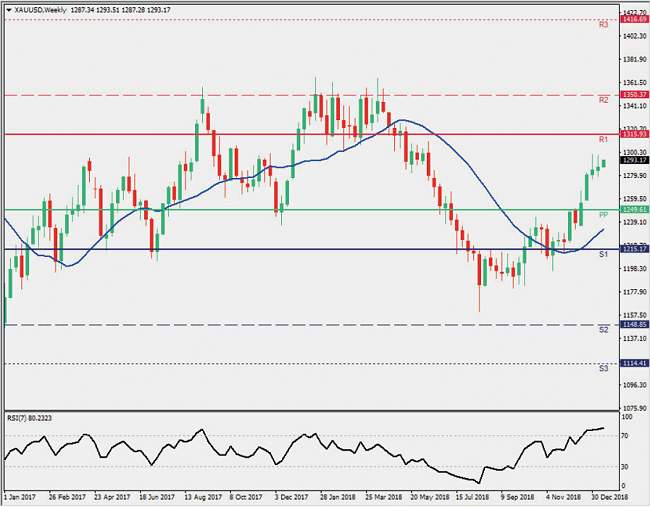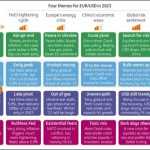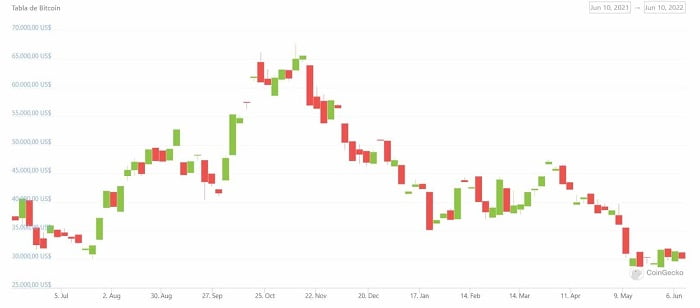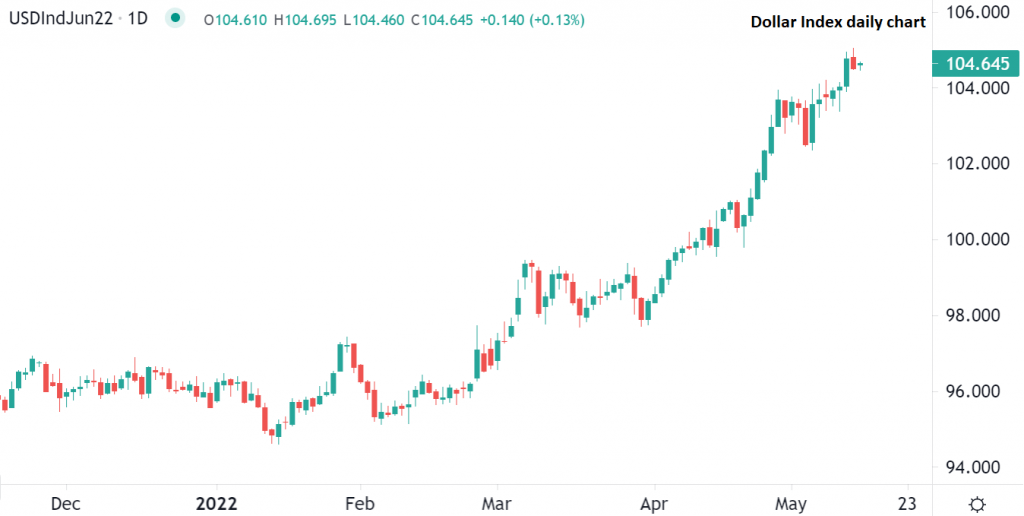Multiple factors come together, driving countries in Asia, Latin America, the Middle East, and elsewhere to seek alternatives to the dollar.
- The dollar’s share as a global reserve currency has fallen above 50%.
- Bitcoin emerges as an alternative to break the dollar’s hegemony.
The dollar is under threat as many countries explore methods to trade without the US currency. This situation generates uncertainty about the possibility of the asset maintaining the dominance that has allowed it to govern the financial world for almost eight decades.
Efforts to reduce the dollar’s hegemony and achieve de-dollarization are not new. It is something that has been discussed and analyzed for several years, but currently, multiple events are coming together and raising serious doubts about whether the United States can sustain the dollar as king over the world’s economy for much longer.
From the point of view of several analysts, it is true that de-dollarization is underway. However, the majority agree that it will not happen immediately, but will happen gradually and may take decades or even generations.
Other economists reject the idea that the dollar has started to lose its status as a reserve currency. They cite, among other reasons, the dominance of the US currency in international trade, as well as the fact that it is an asset that is the reserve currency of central banks in every corner of the world.
However, in what has been of 2023, a series of key events have occurred, indicating that the de-dollarization of the global economy is accelerating. Here are five of them.
“Bye-bye dollar”: the favorite phrase of China, Russia, Brazil, and other countries.
Since late March, the momentum of global de-dollarization has reached its peak as several countries have been rebelling against the dollar.
On the one hand, China and Russia have signed a trade agreement that breaks away from the dollar and focuses on the Chinese yuan as the main currency for trade in various sectors, as previously reported by ForexDominion.
From that moment on, from Latin America to Africa, the Middle East, Europe, Asia, and increasingly more countries, they embark on plans or implement programs to achieve their de-dollarization.
In that sense, the group of emerging economies formed by Brazil, Russia, India, China, and South Africa (BRICS) caught the world’s attention when they announced in late March the creation of an alternative economic system that includes a new reserve currency.
The attention was focused on this announcement because these are the world’s largest countries, both in terms of area and population. And, together, they represent 32% of the world’s GDP. It is estimated that they will reach around 50% by 2030.
In addition, the GDP of the BRICS nations and their potential currencies represent the biggest threat, so far, to the dominance of the US dollar. And indeed, these countries have already surpassed the G7 nations in GDP (PPP), as commented on social media.

In 2014, the BRICS countries founded the “New Development Bank” (NDB) with a seed capital of 50 billion US dollars as an alternative to the World Bank and the International Monetary Fund (IMF).
They also have the Contingent Reserve Arrangement (CRA), created to support affiliated countries in payment difficulties.
These institutions, alternatives to the IMF and the World Bank, are apparently appealing to other countries that are ready to join the BRICS club. Among them are Saudi Arabia, the United Arab Emirates, Egypt, Algeria, Argentina, Mexico, and Nigeria, as confirmed by the South African Minister of Foreign Affairs, Naledi Pandor, during an interview.
With more allied countries, the strategic partnership is expanded to get rid of the US dollar as the global reserve currency.
The money as a weapon of the cold war between China and the United States
Economist Nouriel Roubini believes that the cold war between the United States and China is getting colder every day. From what Roubini comments, it is understood that part of China’s plan to redefine global supremacy involves taking advantage of the financial crisis facing the United States, in order to undermine the status of the dollar and replace it with the yuan, as far as possible.
That’s why the Asian country increasingly promotes the yuan as a currency for oil business, challenging the dollar’s leadership in commodity markets and trying to weaken US hegemony.
In this regard, the United States dealt a blow to itself when it imposed sanctions on Russia, isolating its banks from the Society for Worldwide Interbank Financial Telecommunication (SWIFT) and effectively cutting off its access to the international financial system.
With this action, the US government sent the message to the world that the dollar and the US economy are no longer as safe for the interests of nations.
And from there, there has been an increase in international trade using other currencies. For example, India and Russia can now trade in rupees through banks in Dubai.
So, while the United States spreads fear with more sanctions and puts the dominance of the dollar at risk, as acknowledged by Treasury Secretary Janet Yellen, China continues to establish trade lines with many countries.
It is pushing for direct transactions based in yuan, without the need for intermediation in U.S. dollars.
China is also promoting the use of its own alternative payment systems, such as the Cross-border Interbank Payment System (CIPS), with the aim of providing a viable alternative to SWIFT for international transactions.
In summary, the use of the US dollar as a weapon through sanctions, geopolitical realignments, and the emergence of alternative financial infrastructure are elements that combine to give momentum to the de-dollarization of the global economy.
Senator Marco Rubio, a Republican, spoke about this, believing that by 2028, sanctions by the United States will no longer be a topic of discussion. “There will be so many countries conducting transactions in currencies other than the dollar that we will not have the ability to sanction them,” he predicted.
Two alternatives to the US dollar are on the rise: Bitcoin and gold.
With more countries seeking alternatives to the dollar, the US currency is losing its reserve status at a faster pace, according to economist Stephen Jen. “The dollar now accounts for around 58% of total global official reserves, down from 73% it had in 2001 when it was the undisputed hegemonic reserve,” wrote the former Morgan Stanley analyst in a recent report.

He estimates that the US dollar’s share as a global reserve currency will decrease at a rate 10 times faster than the average rate of the past 20 years.
“What investors need to appreciate is that while the Global South cannot completely avoid the use of the dollar, much of it is no longer willing to do so,” wrote the analyst.
In fact, central banks in China, Russia, and other countries are shedding their dollar reserves to buy gold, as shown by data published by ForexDominion.
Their approach to the asset during the first few months of 2023 yielded record figures, as the major financial entities of the US bought more than 120 tons of gold in that time.
Two alternatives to the US dollar are on the rise: Bitcoin and gold. With more countries seeking alternatives to the dollar, the US currency is losing its reserve status at a faster pace, warns economist Stephen Jen.
“The dollar now represents around 58% of total global official reserves, compared to 73% in 2001 when it was the undisputed hegemonic reserve,” wrote the former Morgan Stanley analyst in a recent report.
The sum represents the best start of the year for gold acquisition by these financial entities since 2010.
And likewise, there are countries that appreciate the potential that bitcoin offers for international payments. Russia is one of them, and the UAE free zone is also exploring bitcoin payments for services.
In Africa, bitcoin is gaining ground, so much so that the cryptocurrency could become a common-use asset throughout the continent.
“I think in the future, in about 10 years, there could be a situation where countries start declaring bitcoin as a legal tender,” said Marius Reitz, general manager for Africa at the cryptocurrency exchange Luno.
Maya Caddell, Chief of Staff at the Web3 startup Nestcoin, agrees with Reitz’s vision and supports it with data from the IMF. The data suggests that Africa’s population will double from the current 1.3 billion to 2.6 billion by 2050. In contrast, Western populations are constantly declining.
This means that “within a few years, one in six Internet users in the world will be African,” explained Caddell. She added that “one in three young people worldwide, those between 15 and 35 years old currently, will be African by 2050,” and they will likely use bitcoin and stablecoins to make their payments.
The influence of the United States as a global leader is weakening.
Emerging markets and developing economies are growing rapidly and have great economic potential.
The trend towards global multipolarization is becoming increasingly evident and constitutes the fundamental driver of de-dollarization.
Speaking on this, the President of the European Central Bank, Christine Lagarde, stated that as more countries tend to increase their holdings of yuan as reserve, their dependence on the US dollar and euro has decreased.
Lagarde made it clear that the US dollar and euro are increasingly being used less as international currency.
She also said that the US-China dispute “exacerbates tensions” and will shake the “dominance” of the dollar.
Lagarde pointed out that less resilient global supply chains will make the economy more unstable, and that an escalation in geopolitical tensions could foster multipolarity.
She mentioned that China has become the world’s largest exporter, and as a result, more countries are tending to use the yuan for international trade while increasing their holdings of the Chinese currency as reserves.
The use of the dollar is decreasing, and “so far, the data does not show significant changes in the use of international currencies,” Lagarde said. “But they do suggest that the status of international currency should no longer be taken for granted.”
Her comments reflect broader fears among policymakers at the annual meetings of the IMF and the World Bank that growing political tensions will weigh on the global economy by disrupting dollar trade, which, from their perspective, will weaken growth and increase inflation.
A new world order is beginning to take shape
“We are witnessing the birth of a new world monetary order that will ultimately weaken the current dollar-based system and lead to higher inflation in the West,” says economic analyst Ramón Casilda Béjar.
His analysis focuses on the fact that “Western central banks, prisoners of the sanctions imposed by their own governments, will not be able to provide support such as emergency liquidity needed to close market gaps.”
However, he warns that the People’s Bank of China (PBOC) does not face such restrictions and is therefore in a privileged position, which could pave the way for the de-dollarization of the global economy.
The World Bank itself acknowledges that the economy based on the US dollar has failed, to the point of falling into a period in which poverty soars and resources to face future challenges diminish.
“A lost decade for the global economy could be brewing,” the financial institution points out.
Economists from various parts of the world agree that the global economic outlook only tends to darken, as ForexDominion reported.
There are also those who see the endgame for the dollar coming and a strong impact on the world economy.
It happens that with the same intensity with which the desdolarization of the economy is being talked about today, the birth of a new world order is also highlighted, leaving several currencies on stage to occupy the vacant crown: the euro, China’s yuan, or bitcoin.
Indeed, bitcoin will benefit from everything that is happening, said analyst Zoltan Pozsar of the renowned Swiss financial institution Credit Suisse.
Conclusion
The wave of de-dollarization in emerging economies is mainly due to several factors:
Firstly, the series of economic sanctions imposed by the United States on other countries sends a message to the rest of the world that they should distrust the use of the US dollar and seek other alternatives to protect their interests.
Secondly, the monetary policy of the US deviates from international macroeconomic policies and is oriented towards national economic interests, which is incompatible with the status of the US dollar as an international currency.
As some emerging countries lack the tools and channels to protect themselves against the Fed’s monetary policy, confidence in the US dollar has decreased.
In addition, the US government has imposed financial sanctions on other countries by taking advantage of the status of the US dollar as an international reserve and circulating currency. This is an important reason for the trend towards de-dollarization.
Thirdly, with the relative weakening of the geopolitical status of the United States and the growing demand of other economies for currencies other than the US dollar, the status of the US dollar as a world reserve currency tends to weaken.
As a fourth element, we highlight that the status of the US dollar in the global monetary system has declined in recent years, although its hegemonic status is still difficult to shake in the short term.
And fifthly, in the future, the trend towards de-dollarization may be accompanied by slow fluctuations in the evolution of the global economic structure, and this trend will exist for a long time.
In recent years, the economic volume of emerging market countries has continued to increase, and the global economic structure demonstrates a trend towards diversification.
This is how the influence of currencies such as the euro, the Japanese yen, the Chinese yuan, and bitcoin as a decentralized financial system is increasing. In this scenario, the global monetary system is showing a trend towards diversification.






